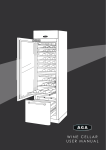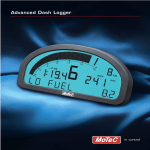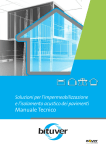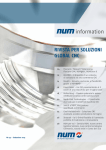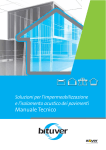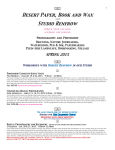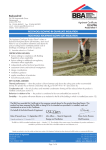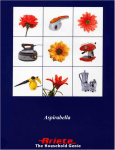Download Aga Ranges Fired Earth User's Manual
Transcript
Ancillary Products A full range of high quality fixing and sealing products, researched and developed to meet Fired Earth standards, are available for both professional and DIY use. Read the instructions on the packaging of Adhesives, Grouts and Sealants very carefully. Website - www.firedearth.com All our installation guides are available to download from our website: Wall Tiling, Underfloor Heating, Wood Flooring and Waterproofing Showers and Bathrooms. Useful Numbers UK Sales Export Sales Installations Technical Home Deliveries Customer Care 0845 366 0400 +44 (0)1295 814316 01295 814310 01295 814271 01295 814313 01295 814396 Disclaimer The specifications and technical information given in this publication are intended for guidance and although they are to the best of our knowledge correct, they are given without warranty. We cannot accept any responsibility for reliance placed upon the advice contained herein since practical expertise and site conditions are outside of our control. Neither do we accept liability for the performance of the product arising from such use. This does not affect your statutory rights. Fired Earth is a trading name of Aga Consumer Products Limited. Registered in England and Wales under Registered Number 3872754. Registered Office Address - 4 Arleston Way, Shirley, Solihull B90 4LH. Floor Tiling Installation Guide Fired Earth, Twyford Mill, Oxford Road, Adderbury, OX17 3SX Tel: 01295 812088 Fax: 01295 810832 www.firedearth.com © Aga Consumer Products Limited trading as Fired Earth. August 2008 Floor Tiling Installation Guide Contents Substrates 4 Planning 6 Fixing 7 Cutting 8 Sealing 9 Grouting 10 Terracotta Tiles 11 Presealed Terracotta, Geometric, Roman Mosaic and Encaustic Tiles 13 Slate and Lubelska Bricks 14 Natural Stone Tiles and Mosaics 15 Porcelain and Glass Tiles 16 External Floor Tiling 16 Glossary 16 Product Selector 1 (Adhesives, Grouts and Additives) 18 Product Selector 2 (Sealing, Finishing and Maintenance) 22 The purpose of this booklet is to outline the basic principles of installing Fired Earth floor tiles. For more detailed technical information, refer to British Standard BS 5385 Wall and Floor Tiling. Important Notes: Prior to installation please ensure the tiles purchased are suitable for the application. All tiles must be thoroughly inspected prior to installation. Ensure your tiler is aware of the expected finish of the tiles and there are sufficient tiles for the area. The tiles must be well shuffled by drawing tiles from all the boxes. Dry lay an area in suitable light as a final check before installation. No complaints regarding the appearance of the product will be accepted by the company once the tiles have been installed. For further information or if any doubt exists, please telephone our Technical Department for advice prior to commencing any tiling. Fired Earth have tested our range of adhesives, grouts and sealants to ensure compatibility with all our tiles (see our Product Selector on page 18-23). Read the instructions on the packaging of Adhesives, Grouts and Sealants very carefully. Keep everything meticulously clean and orderly as work progresses. some of the boards so 'bearers' can be fitted below to provide further support. Substrates If your tiling is to last, it is essential that the surface onto which the tiles are to be laid is sound. Careful consideration must be given to the floor surface to confirm that the surface is level, clean, dry, free of dust, grease and any loose material. Your tiler must confirm the suitability of the subfloor before tiling. Sand and cement screeds When tiling onto a new screed, a minimum period of one week for each 25mm of new screed should elapse to allow the screed to be suitably dry. Further time may be necessary, depending on weather and site conditions. We do not recommend tiling onto anhydrite or fast setting screeds without careful consideration - please contact our Technical Department for further advice. A new screed may shrink as it dries, and this may result in cracks across the screed. If cracking does occur it is likely to appear across any tiles that are fixed to the screed. Ensure that the screed is suitably dry and stable before any tiling is started. Any movement or day joints in the screed must be carried through into the tiled surface. Day joints or construction joints must not be tiled over without the inclusion of an expansion joint. 4 Bumps and hollows in screeded floors Seal all the surfaces of the plywood boards with Fired Earth Universal Bonding Agent* Minor irregularities can be overcome with up to 5mm of Fired Earth Universal Levelling Compound* or Fired Earth Thick Bed Adhesive*. If the floor is very uneven, with undulations of more than 5mm, Fired Earth Universal Levelling Compound* should be used in conjunction with clean granite chippings. Other types of floors Suspended timber floors/ Floating insulated floors Suspended timber floors/floating insulated floors (polystyrene with water resistant chip board over) should be rigid, nonflexing and stable enough to bear the additional load. In order to minimise the damaging effect of lateral movement in the floor surface, it is recommended that the floor is prepared using Fired Earth Fleximat*. Our Sales Team will be happy to provide our separate information sheet. If the suspended timber floor is subject to vertical movement, the floor must be stiffened. Remove flexing by fixing a minimum 18mm, WBP plywood over the existing timber, screwed down at 150mm centres. If the floating insulted floor is subject to vertical movement the floor must be braced by screwing and gluing WPB plywood to its surface, or removing Fired Earth would recommend that all existing floor covering and residue adhesive are removed before tiling. However it is possible to tile over existing tiles provided the surface is completely sound, secure and thoroughly cleaned to remove all contaminants such as oil, wax and grease, using an appropriate cleaner. Cork and woodblock floors must be removed and any bitumen left on the subfloor should be scraped away and all loose material removed. Vinyl tiles must be primed with Fired Earth Universal Bonding Agent*. Damp Prior to fixing tiles, damp of any nature should be rectified. Consult a specialist if any doubt exists. Finished floor level The finished level of an existing floor will be raised by the maximum thickness of the tile plus approximately 3–4mm adhesive bed. Any resultant discrepancy with the levels of adjoining rooms can be minimised with the use of threshold/reducer strips. Underfloor heating Fired Earth floor tiles can be used over most underfloor heating systems. The heating should be correctly commissioned prior to tiling and switched off during tiling. There must be no cracks in the screed otherwise any floor tiles fitted on top will crack. Fired Earth Fleximat* can be used as an anti-fracture membrane over Fired Earth Underfloor Heating. Our Sales Team will be happy to provide our separate information sheet. Always use flexible adhesive and grout and provide an expansion gap around all perimeters and abutments. As a general guide, do not tile continuously over areas with a length of over 6 metres, fit an expansion gap to prevent stress building up in the floor. Always fit expansion joints in doorways of adjoining tiled rooms. DO NOT switch the heating on for at least two weeks after tiling, then, starting from ambient temperature, do not increase the temperature by more than 5°C in a 24 hour period until the normal working temperature is reached. 'Wet' floors Please refer to our Waterproofing Showers and Bathrooms Installation Guide for further advice. Walls When tiling onto walls with floor tiles, consideration must be given to the weight of the tile and suitability of the substrate. Our Sales Team will be happy to confirm the weight of any of our tiles. 5 In general, the following weights apply to Plaster - 20 kg/m2 : Plasterboard - 32 kg/m2 2 the list of substrates, provided they are fixed Brick/block/render - 40 kg/m + correctly and sound and stable; Tile Backer board/wbp plywood - 40 kg/m2 + Step 4. When tiling commences you should start at point ‘X’, so check that the lines you have marked make a perfect right angle and the side line runs parallel to the centre line. Planning X first tile position Take the time to study the room and plan your work. Tiling usually commences in the corner furthest from the door. If there is more than one door, it will be necessary to decide which is the primary entrance. Consider how cuts will look against fixed furniture etc. and through doorways. Adjustments may be required to achieve the best results. Step 2. Mark the midpoint of the room by measuring the centre of the line. From this point, lay down tiles (without fixing them) alongside the centre line, allowing for joints, to see where the last whole tile will end. Mark (with string or chalk) a line 1 to 2 at a right angle alongside this last whole tile. 1 Please note: Where tiles have variable depths e.g. Reclaimed Terracotta the thickest tile including the adhesive should be taken as the approximate floor height increase. Step 1. Mark the centre line of the room from the wall of the primary entrance to the far end. You will need to measure and mark the midpoints of walls A to B and C to D. Join these two points with a taught chalk line and mark. A B centre line C 6 D midpoint 2 Step 3. Locate starting point ‘X’ by laying down tiles along the new line 1 to 2 in the same way as before, to see where the last whole tile will end. Now mark your side line 3 to 4 at a right angle alongside this last whole tile. 4 Grout joints The width of grout joints will vary between 3–12mm. Large joints will be necessary on rustic tiles such as terracotta and slate. Please refer to the Fired Earth price list for recommended grout joints. Roman Mosaic tiles should be butt jointed (no allowance made for a grout joint) except when used in a shower where a narrow but impervious grout joint will be necessary. When fitting random sized tiles an area should be 'dry laid' first to establish the optimum joint width. Joint sizes may vary from 2mm-10mm across the floor depending on the mixture of tile sizes used and the pattern. Mosaic tiles - Ensure that the sheets of mosaic tiles are spaced so that once grouted, no individual sheets can be distinguished. Particular care is required when blending individual sheets of mosaics, to ensure a subtle blend of colour is achieved. Damp Tiles Damp tiles should be stored on end in a well ventilated area to dry thoroughly before fixing. This may particularly apply to Natural Stone, Lubelska Brick and Reclaimed Terracotta and Encaustic tiles. Fixing Before commencing tiling please ensure you are familiar with the important notes on page 3. 3 It is important to establish which way the tiles are to be laid before any tiling is started. Make sure the person fitting the tiles knows what the tiles should look like. ‘Shuffle’ the batch to ensure that any colour and tonal variations are well mixed. Minor chips and blemishes should be expected and are best used for cuts or well mixed into the floor. Some of our tiles vary considerably in depth. Where this is applicable, it is important to grade the tiles before installation. Some of our tiles require careful sealing prior to installation. (See page 9 onwards) Be certain that the tiles are suitable for the application. 7 Terracotta, Lubelska Bricks and Slate floor tiles can be irregular or bowed and may require a greater depth of adhesive in order to ‘iron out’ potential irregularities in the finished surface. Fired Earth Thickbed Adhesive* is perfect for this purpose as it can be used up to 25mm in depth. Stone or glass tiles are normally fixed with white adhesive to prevent the colour of the adhesive 'bleeding' through. Push the tile home firmly with a slight twisting movement. Place the next tile adjacent to the first, allowing for the grout joint, and so on over the prepared area. Using a suitable notched trowel, spread an area 1 square metre to a depth of approximately 4mm. ‘Butter’ the back of the tile with a further 2mm of adhesive and place the tile in the starting position as described in the Planning Steps 1 to 4. All the tiles should be soundly bedded in the adhesive without any space for air underneath. Be careful not to allow any adhesive onto the surface of the tiles. Any surplus should be wiped away with a clean damp sponge. Once a square metre area has been tiled, another similar area should be prepared and so on until you have completed the floor with whole tiles. The remaining perimeter area should now be prepared and cut tiles laid. If you prefer cuts can be fitted as the work progresses. When using Fired Earth Thickbed Adhesive*, use a ‘large format’ trowel to apply the correct bed of adhesive to the subfloor. When laying thin, machine made glazed, porcelain or quarry tiles to an even surface it may be possible to fix the tiles directly onto a thin bed of adhesive, without having to ‘butter’ the back of the tile. Check the floor level as work progresses with a spirit level and a straight edge. Fixing tiles into sand and cement should be avoided because of the time required for the tiles to dry out and the associated problem of efflorescence. Cutting Due to the thickness and make-up of the majority of Fired Earth floor tiles, it is recommended that either a diamond cutter or an angle grinder is used to cut the tiles. Water cooled diamond cutters are available from tool hire shops. 8 Please wear suitable protective eyewear and protective clothing when cutting tiles. Porcelain tiles require high quality diamond blades for cutting. Drilling holes can be a difficult task without the correct equipment. Fired Earth recommend the use of the ARMEG® range of porcelain drill bits and core drills. When cutting or drilling the tile, the with a sanding block or in severe cases, by rubbing the tile edge with a broken piece of another tile. surface may become wet and dirty. Wipe the tile clean immediately after cutting. Using a water cooled diamond cutter will achieve the most accurate cut. When using an angle grinder, mark the tile where you wish to cut it, run the cutting disc along the marked surface cutting the tile to at least two thirds of its depth, then the tile can be snapped. Rough edges and chips should be smoothed and finished Roman Mosaic - Metal reinforcing bars are used in the manufacture of border designs and may cause excessive wear on cutting equipment. Care should be taken to ensure that the pattern is correctly matched, particularly in the case of the basketweave design. Small pieces of mosaic can become detached during cutting and should be glued back into place using an epoxy or similar glue. Sealing Many Fired Earth tiles require sealing to prevent stains from penetrating the body of the tile. Please refer to our Product Selector on pages 18 -23 for more details. is not allowed to ‘spoil’ (i.e. the hardening of excess sealer on the tile surface). Before sealing commences it is imperative that the tiles are completely clean and dry, otherwise you may actually seal in dirt, cement dust and moisture which can impair the final appearance. With other tiles requiring sealing the process is performed in two stages. The first seal is applied once the tiles are fixed but before they are grouted. The second seal is applied over the whole floor, once the tiles have been grouted and have completely dried. The process of sealing should be kept meticulously clean and all materials including brushes and cloths etc., should be new and unused. It is equally important that the sealer soaks into the surface of the tile, disappears and Terracotta and Encaustic tiles must be individually sealed prior to fixing. All sealers take a few days to oxidise and will not be fully effective during this time. Therefore keep traffic across the floor to a minimum for the first week. 9 Grouting Terracotta Tiles (except Presealed Terracotta) Grouting refers to the process of filling the spaces between the individual tiles and thus completing the floor surface. Before grouting can commence, the adhesive used must have cured, which usually takes between 12–24 hours for Fired Earth Floor Adhesive* and 3 hours for Fired Earth Fastset Adhesive*. The depth of adhesive, ambient temperature, porosity of the tile and subfloor will all affect the curing time. The joints to be grouted should be clean, dry and free of loose debris and excess adhesive. The addition of Fired Earth Flexibond* will increase durability and impart flexibility to the grout. Fired Earth Flexibond* should be added to the grout when tiling onto timber floors prepared with WBP plywood, floating floors, tiles over underfloor heating and 'wet floors'. being spread over the whole of the tile surface, as well as into the grout joints. The slurry is then pressed with a ‘grout float’ or squeegee into the grout lines and into any pits in the surface of the tile. Any surplus should be wiped off the tiles particularly before it starts to dry with a clean damp sponge, continuously washing the sponge using clean warm water. It is advisable to grout and clean a small ‘test’ area prior to grouting the whole floor. This will give you the opportunity to check that all grout can be removed without staining the tiles and that you are happy with your chosen colour. Smooth off the joints and remember that the main purpose of grouting is to strengthen the overall floor and, in order to achieve this, the grout must fully support the edges of all the tiles. Pointing and Slurry Grouting Pointing is the careful application of grout between the tiles avoiding contaminating the surface of the tile by using a damp sponge to wipe off any excess. Slurry grouting is the method of grouting involving a wet mix, or slurry of grout 10 The addition of Fired Earth Flexibond* into the grout makes removal of surplus grout more difficult, so it is important to clean as you grout. Grout should be pushed well down into the joints so that no air pockets exist and the joints are fully filled. The more the grout is compacted the harder it will set. A timber dowel of the appropriate diameter may be used to assist in compacting the grout. Fired Earth offers grouts for floors in three colours, Sandstone, Grey and Limestone*. We do not recommend the use of strong pigmented grouts which are more likely to stain the tile. As soon as the floor is finished and the grout has completely dried, the tiles should be thoroughly cleaned to remove any stains or fine dust particles. Sealing much sealer the tiles are likely to absorb. Fired Earth recommend Terracotta tiles are sealed with Fired Earth Linseed Sealer* prior to fixing. We would advise that a number of sample tiles are tested for porosity, from which an indication of the amount of sealer that the tiles will absorb can be gauged. Remember the oil should soak in within 20 minutes of application and the tiles should be matt in appearance. Using a clean, short haired paint roller or brush, work the sealer into the surface so that the tile appears matt again within 10 minutes. If the tile regains its matt appearance too quickly, use the sealer a little more liberally. The tiles will readily absorb the first coat of sealer and, as a rough guide, you should expect to use up to 75% of the sealer on the first coat. Within 20 minutes of applying the sealer, check that there is no surplus remaining on the surface of the tiles. Wipe away any surplus sealer with a clean, dry cloth. If oil is allowed to remain on the surface for 20 minutes or more, it is likely that the oil will begin to turn tacky or hard, which will necessitate remedial work. The final seal can only be carried out once the grouting has completely dried. Take particular care during the application of the second coat of sealer as the tile is now partially sealed and will absorb less sealer than the first coat. Apply a second coat to a small test area to gauge how Finishing Option A - Wax Polish Once sealed, Fired Earth’s traditional method of finishing terracotta is for Fired Earth Wax Paste* to be applied. This enhances the natural colours within the clay and provides protection against staining. Apply the first coat as soon as possible after the sealer has dried. The wax should be applied sparingly, allowed to harden then buffed to form a hard, protective finish. For a newly installed floor, Fired Earth Wax Paste* should be applied once a week for the first 4–6 weeks, in order to build up a hard wearing surface. Option B - Cotto Rapid* As an alternative finish, providing less protection but requiring less maintenance, Cotto Rapid* can be applied once the tiles have been sealed for the second time. Ensure the sealant is completely dry before application of this product. Two to three coats should be applied sparingly with a clean cloth, allowing sufficient drying time between coats. Cotto Rapid* should be re-applied once or twice per year. Cotto Rapid* is not recommended for use on Fired Earth Antique 11 Pammets because salt pits cannot be 'blended in' without the use of wax polish. Maintenance Terracotta floors should be swept or vacuumed regularly to remove all loose dirt. It is important to use the correct Fired Earth products when maintaining your floor, as these have been formulated to both clean the floor and be gentle on the sealants. Spillage and cooking stains should never be allowed to remain on an unglazed floor and should be wiped off immediately with a clean, damp cloth. More stubborn marks can usually be removed using white spirit. Terracotta finished with wax polish Between waxing, the floor should be washed with Fired Earth Super Floor* diluted in clean, warm water. Avoid harsh or abrasive floor cleaners. For most domestic floors it is advisable to apply further wax coats from time to time. The frequency will be dictated by the wear and washing the floor receives. If a build up of wax becomes visible, reduce the frequency of waxing. Likewise, if the tiles are marking or look dull and dry, increase the frequency. Terracotta finished with Cotto Rapid* Floors should be wiped clean using Fired Earth Stone Clean* - diluted with water. Reapply Cotto Rapid* when the floor appears dull. 12 General characteristics Efflorescence - Terracotta contains various soluble minerals and salts which can be activated by damp and moisture. This may appear as a white stain or ‘bloom’ on the surface and should be wiped away with a clean damp cloth. Stubborn efflorescence may be removed with a cement stain remover, such as HG Extra Cement/Grout Remover*. Do not soak terracotta tiles during fixing as this may activate efflorescence. Presealed Terracotta These tiles require no sealing. Finishing Apply one coat of Cotto Rapid*. The use of this product on Pale Presealed Terracotta may darken the appearance. Reapply Cotto Rapid* when the floor appears dull. Maintenance Presealed terracotta floors should be swept or vacuumed regularly to remove loose dirt. It is important to use the recommended Fired Earth products when maintaining your floor as these have been formulated to both clean the floor and be gentle on the sealants. Floors should be wiped clean using Fired Earth Stone Clean* diluted with water. Streaking - This occurs when terracotta is sealed with a dirty brush, dirty oil or uneven application. As soon as streaking is noticed, stop sealing and eliminate the cause. Geometric and Roman Mosaic Tiles Sweating - Terracotta tiles can sweat and on occasion may actually exude recently applied sealer. This might happen when cool, damp tiles are sealed in a hot environment or if a new floor is sealed in an unoccupied property in mid-winter. Avoid sealing terracotta tiles under these conditions. sparing coats of MN Stain Stop*. They Salt pits - Salt occurs naturally in terracotta. In certain situations the salt is drawn to the surface and creates craters or blistering. Should this occur, fill the craters with grout, reseal and finish. Mildew - If terracotta tiles are sealed while damp, or the subfloor is damp, there is a risk of mildew forming in the tiles. This will appear as black or white marks and spots. For further information contact the Fired Earth Technical Department. Sealing Geometric tiles should be sealed with two require no further sealant or finishing. Fired Earth Roman Mosaic tiles do not require sealing prior to grouting. Apply 2 coats of MN Stain Stop* after grouting. Maintenance Tiled floors should be swept or vacuumed regularly to remove all loose dirt. It is important to use the correct Fired Earth products when maintaining your floor, as these have been formulated to both clean the floor and be gentle on the sealants. Spillage and cooking stains should never be allowed to remain on an unglazed floor and should be wiped off immediately with a clean, damp cloth. More stubborn marks can usually be removed using white spirit. Floors should be wiped clean with MN Easy Care* diluted with water. Encaustic Tiles Due to the very porous and delicate nature of this tile, extreme care must be taken with handling and installing. Fired Earth recommend the use of our installation service for this tile. Please discuss further details with a member of our Sales Team. Detailed fitting instructions must be followed. These can be obtained through our sales teams in store or via our Technical Department (see page 24 for contact numbers). 13 Slate and Lubelska Bricks uncalibrated slate tiles, it is recommended that the tiles are graded before installation Sealing Maintenance Pale Classic and Chipped Edge Slate - Before grouting apply one or two coats of Fired Earth Stone Shield* using a clean, fluff-free cloth. Allow approximately 2 hours between applications and do not apply more sealer than can be fully absorbed by the tiles within 20 minutes. Surplus sealer should be removed with white spirit. Tiled floors should be swept or vacuumed regularly to remove all loose dirt. It is important to use the correct Fired Earth products when maintaining your floor, as these have been formulated to both clean the floor and be gentle on the sealants. Following the application of Fired Earth Lubelska Bricks can vary enormously in porosity. In some cases a litre of sealant may be required per 3m2 of tiles. Apply the sealer liberally to ensure thorough sealing. Surplus sealer should be removed in 20 minutes. Finishing In wet areas e.g showers, no finishing product should be used. Slate - After grouting apply a first coat of Fired Earth Stone Finish* evenly and sparingly over both the tiles and grout with a soft, fluff-free cloth. The second coat should be applied at right angles to the first coat after 20 minutes. Further coats should be applied at least once a year or more frequently as required. Lubelska Bricks - After grouting, the tiles are finished with Cotto Rapid*. Two to three coats should be applied sparingly with a clean cloth, allowing sufficient drying time between coats. The third coat is more likely to provide a semi-gloss finish. 14 Spillage and cooking stains should never be allowed to remain on floor and should be wiped off immediately with a clean, damp cloth. Fired Earth Super Floor* - Tiles finished with Fired Earth Stone Finish* should be wiped over with Fired Earth Super Floor* diluted in clean, warm water. Tiles finished with Cotto Rapid* should be wiped clean with Fired Earth Stone Clean* diluted with water. Reapply Cotto Rapid* when the floor appears dull. Product notes Slate - A certain amount of delamination should be expected from slate tiles during and following installation. During installation any loose flakes should be broken off. Where delamination occurs after installation, the affected area should be resealed. Slate tiles should not be installed in areas subject to direct and intense heat, as this may cause extensive delamination. Uncalibrated Slate - Because of the great variation in the depth of individual Stone Finish*, these products must always Lubelska Bricks - Lubelska Bricks are irregular in size, and depth and this needs to be taken into account when planning and tiling. Being a reclaimed product, the tiles will vary in colour, texture and size. be finished and maintained using Fired Earth Wax Paste*. Natural Stone Tiles and Mosaics Sealing MN Stain Stop* will maintain the natural appearance of the tile. Fired Earth Stone Shield* will enhance the colours and deepen the appearance of the natural stone. Before grouting apply one to two coats of appropriate sealant. Once the grouting has completely dried and the tiles are clean and dry, apply one further coat with a fluff-free cloth. Any excess sealant should be wiped off before it dries with a clean, dry cloth. Ensure the grout is fully sealed. Finishing If using Fired Earth Stone Shield* finish with Fired Earth Stone Finish*; spread evenly and sparingly over both tiles and grout with a soft, fluff-free cloth, unless in a wet area where no finishing product should be used. If using MN Stain Stop* no finishing product is required. Maintenance Tiled floors should be swept or vacuumed regularly to remove all loose dirt. It is important to use the correct Fired Earth products when maintaining your floor, as these have been formulated to both clean the floor and be gentle on the sealants. Spillage and cooking stains should never be allowed to remain on an unglazed floor and should be wiped off immediately with a clean, damp cloth. Tiles will require resealing from time to time, dependant on use. MN Stain-Stop* - Tiles sealed with MN Stain Stop* should be cleaned with MN Easy Care*. Fired Earth Stone Shield* - Tiles sealed with this product should be cleaned using Fired Earth Super Floor* diluted with clean water. It is unadvisable to use Fired Earth Super Floor* in wet areas. Product notes Honed and Filled Stone - Occasionally the filler in the stone may require repair by simply infilling with Limestone grout* or a 2 part resin based filler which is available for purchase from Fired Earth via our Technical Department. 15 Colour change - As the colour of each batch of stone will vary, it is advisable to confirm your choice of sealant by treating a small number of test tiles prior to treating the whole floor. Porcelain and Glass Tiles These tiles do not require any sealing or finishing products. After grouting, the tiles should be polished with a soft, clean cloth to remove any remaining grout film. The grout can be sealed with MN Stain Stop* to prevent staining. Maintenance Clean your floor with an MN Easy Care* when required. External Floor Tiling Many of our tiles are suitable for external use. As we sell our tiles all over the world, atmospheric/climate conditions must be taken into consideration. For more information on specific tiles please speak to our Sales Team or our Technical Department. Day Joints - A ‘joint’ in the screed as a result of a break in pouring the screed Presealed – Pre-treated with sealer at the factory Delamination – Loss of some or all of a naturally occurring layer of slate Pointing – Careful application of grout between tiles using a tool to finish off the joint Diamond Cutter – Electrical cutting tool Expansion Joints – A space allowed in a floor to allow for movement Fired Earth Flexible Fastset Adhesive – Flexible tile adhesive with improved bond strength Fired Earth Fleximat – An orange plastic sheet used to prepare timber floors for tiling Stone Clean 1 – Cleaning agent Floating or Insulated Floor – A thermally efficient floor which is not physically attached to its base Adhesion – The ability to stick Finishing – Process of applying final coat of sealer Anhydrite Screeds – Calcium based screed, seek advice Appliances – Fridge, dishwasher etc. Asphalt – Black, bituminous base Bedding – Depth of material to seat tiles Bitumen – Black in colour, often used as a glue to stick vinyl tiles Bowed – Convex or concave shaped tiles Buffed – Abrasion of a waxed surface Butter – Applying a thin bed of adhesive to the back of the tile. 16 Grout Float – Tool used to apply grout Chalk Line – Tool used to provide straight line for setting out tiles Grout Joints – Channel formed between tiles to be filled with grout material Chipboard – A composition of fibrous timber Honed Stone – Mechanical process used to smooth the surface of natural stone Coatings – Material applied to a surface Linseed Sealer – Impregnating sealer Compacting – Pressing material firmly into position MN Stain Stop – Impregnating sealer Cotto Rapid – Surface sealer and finish Curing – Improvement in strength, hardness, durability and other properties of a material Damp Proof Membrane (DPM) – A layer of impervious material installed to prevent rising damp Slurry – A thick creamy liquid Spoil – Excessive or surplus sealer Glossary Angle Grinder – Electrical tile cutting tool Sealing – Process of applying liquids to reduce porosity Fired Earth Flexibond – A liquid used as an additive in adhesive or grout to increase flexibility and bond strength Filled Stone – Where any naturally occurring holes have been filled with resin based filler Butt Jointed – Fixing tiles together tightly with no allowance for a grout joint Sand and Cement Screed – A mixture laid to form an accurate flat base Movement Joint - An area which allows for movement caused by change in temperature/humidity etc. Squeegee – Rubber edged tool to aid removal of excess grout Fired Earth Stone Finish – A surface sealer, protector and finish Fired Earth Stone Shield – An impregnating sealer Straight Edge - Tool used to ensure tiles are ‘straight’ and ‘flat’. Subfloor – The surface on to which the tiles are to be laid Fired Earth Super Floor – Cleaning agent Thermal Movement – Movement induced by temperature change Fired Earth Universal Bonding Agent Primer for surfaces prior to applying tile adhesive. Fired Earth Universal Levelling Compound – Material used to remove unacceptable variations of level in a subfloor, or bed underfloor heating Uncalibrated – Tiles will vary in depth Notched Trowel – Tool designed to apply a specified depth of adhesive Wax Polish – Protective material originated from bees wax Oxidise – Hardening reaction following exposure to the air WBP Plywood - Minimum 18mm deep, suitable grade for floor tiling 17 Product Selector 1 Substrate - Adhesives, Grouts and Additives Sand and Cement Screed Concrete/Brickwork Timber Floorboards (sound and secure) Quick reference guide Timber Floorboards overlaid with WBP Plywood (min depth 18mm) Timber Floating Floors Quarry, Clay, Glazed Tiles Existing tiles must be well fixed; any hollow spots should be made good and filled Hollow or loosely fixed vinyl tiles should be removed along with their adhesive residue, prime vinyl with Universal Bonding Agent* Fit in accordance with manufacturers instructions. Specification may vary according to substrate All surfaces must be degreased and thoroughly cleaned to remove old polish residues etc All surfaces must be degreased and thoroughly cleaned to remove old polish residues etc. Fit in accordance with manufacturers instructions. Specification may vary according to substrate Watch Points New concrete should be allowed to dry for at least 6 weeks, cement sand screeds 3 weeks and cement sand rendering 2 weeks Must be screwed down to joists and noggings and be free from deflection Countersink screws to 150mm centres If deflection exists in floor, overlay with plywood prior to using Fleximat* or install ‘bearers’ between joists Preparation If dusty or porous seal with Fired Earth Universal Bonding Agent* Seal with Fired Earth Universal Bonding Agent, overlay with Fleximat (see instructions)* Seal with Fired Earth Universal Bonding Agent* Seal with Fired Earth Universal Bonding Agent, overlay with Fleximat (see instructions)* Vinyl Tiles, Flooring Grade Asphalt (internal use only) PRESEALED AND RECLAIMED TERRACOTTA TILES AND LUBELSKA BRICKS Adhesive Fired Earth Fastset Floor Adhesive or Fired Earth Thickbed Adhesive with Lubelska Brick and Reclaimed Terracotta tiles* Grout Sandstone* Additive Not required Fired Earth Flexibond* in both adhesive and grout Underfloor Heating Tiles need to be dry before installation Not required Fired Earth Flexibond* in both adhesive and grout Not required Fired Earth Flexibond* in both adhesive and grout ENCAUSTIC - Tiles need to be dry before installation Adhesive Fired Earth White Floor Adhesive* Grout All Fired Earth grouts are suitable* Additive Not required Fired Earth Flexibond* in both adhesive and grout SLATE TILES - Tiles need to be dry before installation Adhesive Fired Earth Fastset Floor Adhesive* Grout All Fired Earth grouts are suitable* Additive Not required Fired Earth Flexible Fastset Floor Adhesive* Fired Earth Flexibond* (Use Thickbed Adhesive with all 40 x 60cm and 60 x 60cm Tiles) Fired Earth Flexible Fastset Adhesive* Fired Earth Flexible Fastset Adhesive* Not required Fired Earth Flexible Fastset Adhesive* Fired Earth Flexibond Notes: Use this table in conjunction with Fired Earth Installation guides. 18 * Read the instructions on the packaging of Adhesives, Grouts and Sealants very carefully. 19 Product Selector 1 (cont’d) - Adhesives, Grout and Additives Substrate Sand and Cement Screed Concrete/Brickwork Timber Floorboards (sound and secure) Quick reference guide Timber Floorboards overlaid with WBP Plywood (min depth 18mm) Timber Floating Floors Countersink screws to 150mm centres If deflection exists in floor, overlay with plywood prior to using Fired Earth Fleximat or install ‘bearers’ between joists* Existing tiles must be well fixed; any hollow spots should be made good and filled Hollow or loosely fixed vinyl tiles should be removed along with their adhesive residue, prime vinyl with Fired Earth Universal Bonding Agent* Fit in accordance with manufacturers instructions. Specification may vary according to substrate Seal with Universal Bonding Agent, overlay with Fleximat (see instructions)* All surfaces must be degreased and thoroughly cleaned to remove old polish residues etc All surfaces must be degreased and thoroughly cleaned to remove old polish residues etc Fit in accordance with manufacturers instructions. Specification may vary according to substrate Fired Earth White Fastset Floor Adhesive* Fired Earth White Fastset Floor Adhesive with Fired Earth Flexibond added* Watch Points New concrete should be allowed to dry for at least 6 weeks, cement sand screeds 3 weeks and cement sand rendering 2 weeks Must be screwed down to joists and noggings and be free from deflection Preparation If dusty or porous seal with Fired Earth Universal Bonding Agent* Seal with Fired Earth Universal Bonding Agent, Seal with Fired Earth overlay with Fired Earth Universal Bonding Agent* Fleximat (see instructions)* Quarry, Clay, Glazed Tiles Vinyl Tiles, Flooring Grade Asphalt Underfloor Heating (internal use only) NATURAL STONE TILES AND MOSAICS - Tiles need to be dry before installation Fired Earth White Fastset Floor Adhesive with Fired Earth Flexibond added* Adhesive Fired Earth White Fastset Floor Adhesive* Grout All Fired Earth grouts are suitable* Additive Not required Fired Earth Flexibond in grout* Not required GLAZED, PORCELAIN AND GEOMETRIC TILES Adhesive Fired Earth Flexible Fastset Adhesive* Grout Grey/Sandstone/Limestone* Additive Not required GLASS TILES Fired Earth Flexibond in grout* (Thickbed Adhesive can be used for all tiles 40 x 60cm and 60 x 60cm and above) Fired Earth Flexibond* (grout only) Not required Fired Earth Flexibond (grout only)* (Use Thickbed Adhesive with all 40 x 60cm and 60 x 60cm Tiles) Adhesive Fired Earth White Fastset Floor Adhesive with Flexibond added* Grout White/Grey/Limestone* Additive Fired Earth Flexibond in grout* Notes: Use this table in conjunction with Fired Earth Installation guides. 20 * Read the instructions on the packaging of Adhesives, Grouts and Sealants very carefully. 21 Product Selector 2 - Sealing, Finishing and Maintenance Sealant Product Finish Terracotta (inc. Reclaimed terracotta) Fired Earth Linseed Sealer* Wax paste (high protection/high maintenance/ colour enhancer) Pre-sealed terracotta Not required Lubelska bricks Fired Earth Stone Shield* Cotto Rapid (low maintenance, less protective)* Quick reference guide Cleaner Maintenance For waxed floors, use Fired Earth Super Floor; for Cotto Rapid floors, use Clean Stone 1* For waxed floors it is advisable to apply further wax coats from time to time; For Cotto Rapid floors, reapply when floor appears dull* Cotto Rapid* Clean Stone 1* Reapply Cotto Rapid when floor appears dull* Cotto Rapid* Clean Stone 1* Reapply Cotto Rapid when floor appears dull* Encaustic Fired Earth Stone Shield* (follow specific instructions) Fired Earth Stone Finish* Fired Earth Super Floor* Reapply Fired Earth Stone Finish when floor appears dull* Geometrics MN Stain Stop* Not required MN Easy Care* Not required Slate Stone Shield in dry areas* MN Stain Stop in wet areas* Fired Earth Stone Finish if using Fired Earth Stone Shield only* If finishing with Fired Earth Stone Finish, use Fired Earth Super Floor; if sealing with MN Stain Stop* use MN Easy Care* For wet areas re-apply MN Stain Stop* when tiles appears porous; For dry areas, re-apply Fired Earth Stone Finish when tiles appear dull. Wax paste will be required for Pale Classic and chipped edge tile (use only in dry areas) Natural Stone (inc. Stone Mosaics) MN Stain Stop to retain natural appearance* Stone Shield to enhance natural colours* If sealing(dry areas only) with Fired Earth Stone Shield, use Fired Earth Stone Finish; if sealing with MN Stain Stop no finish is required* If finishing with Fired Earth Stone Finish, use Fired Earth Super Floor; if sealing with MN Stain Stop use MN Easy Care* For MN Stain floors, it is advisable to re-apply the MN Stain Stop if tiles become porous. For Fired Earth Stone Finish floors, reapply when floor appears dull* Roman Mosaics MN Stain Stop* Not required MN Easy Care* It is advisable to reapply the MN Stain Stop* if tiles becomes porous Porcelain Tiles do not require sealing; seal grout joints with MN Stain Stop* Not required MN Easy Care* Not required Glass Tiles do not require sealing; seal grout joints with MN Stain Stop* Not required MN Easy Care* Not required Notes: Use this table in conjunction with Fired Earth Installation guides. 22 * Read the instructions on the packaging of Adhesives, Grouts and Sealants very carefully. 23












